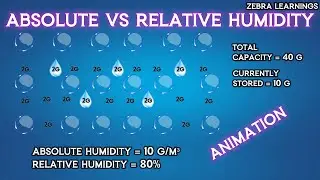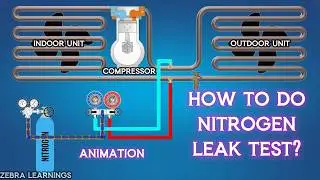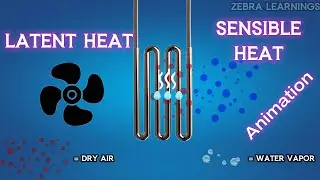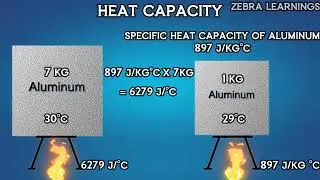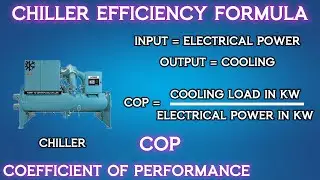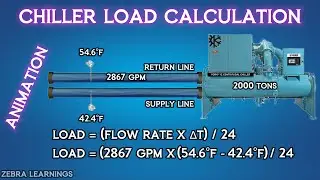Absolute Humidity vs Relative Humidity | Animation |
Absolute Humidity
Definition:
Absolute humidity is the measure of the actual amount of water vapor (moisture) present in the air, regardless of the air's temperature. It is usually expressed in grams of water vapor per cubic meter of air (g/m³).
Calculation: Absolute humidity is calculated by taking the mass of water vapor and dividing it by the volume of air in which the vapor is distributed.
Characteristics:
It does not change with temperature, meaning the amount of moisture in the air remains constant regardless of changes in temperature.
It gives a direct measure of how much moisture is present in the air.
Relative Humidity
Definition:
Relative humidity is the ratio of the current absolute humidity to the highest possible absolute humidity (which depends on the current air temperature). It is expressed as a percentage.
Calculation: Relative humidity is calculated using the formula:
Relative Humidity (%) = ( Actual Vapor Pressure / Saturation Vapor Pressure)×100
Actual Vapor Pressure: The pressure exerted by the water vapor present in the air.
Saturation Vapor Pressure: The maximum pressure that water vapor can exert at a given temperature.
Characteristics:
It changes with temperature because warm air can hold more moisture than cold air.
It provides a sense of how humid or dry the air feels.
![Lida, Серега Пират - ЧСВ [СНИППЕТ 30.01.24]](https://pics.providosiki.ru/watch/zulRZEwgcvk)










